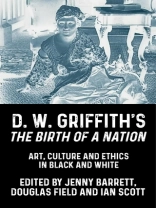In 1915, American filmmaker D. W. Griffith released a film that went on to become one of the most controversial of all time. Over a century later,
The Birth of a Nation continues to stimulate debate on the relationship between Hollywood and racism. This volume reveals new perspectives on Griffith’s film across ten original chapters, re-considering it as text, historical milestone and influence. The volume also includes a helpful timeline that lists key publications and events in
Birth’s ongoing history, revealing the rich and stimulating discourse on its art, its cultural impact and its ethical dimensions.
Table des matières
Introduction: the legacy of The Birth of a Nation – Jenny Barrett, Douglas Field and Ian Scott
1 Black faces in The Birth of a Nation: D. W. Griffith’s art and the African American actor – Corin Willis
2 The afterlife of stereotype: Kara Walker, Kehinde Wiley, DJ Spooky and The Birth of a Nation – Robert Burgoyne
3 Kunle Olulode in conversation with Dr Jenny Barrett
4 Desegregating the screen: Oscar Micheaux and the rise of activist cinema – Jeffrey Geiger
5 Examining the ‘white saviour’ in The Birth of a Nation – Jonathan Ward
6 A rope with two ends: Nate Parker, D. W. Griffith and the tangled legacies of The Birth of a Nation – Lydia J. Plath
7 The birth of an origin – Oliver C. Speck
8 The Birth of a Nation, black documentary and the 1992 L.A. uprisings – E. James West
9 ‘Go see it because it will make a better American of you’: The Birth of a Nation in the era of ‘fake news’ – Jenny Barrett
10 Standing their ground: a southern community’s response to The Birth of a Nation – Van Dora Williams
11 The Birth of a Nation: a timeline – Jenny Barrett
Afterword – Robert J. Corber
Index
A propos de l’auteur
Jenny Barrett is Senior Lecturer in Film at Edge Hill University Douglas Field is Senior Lecturer in Twentieth Century American Literature at the University of Manchester Ian Scott is Professor of American Film and History at the University of Manchester












